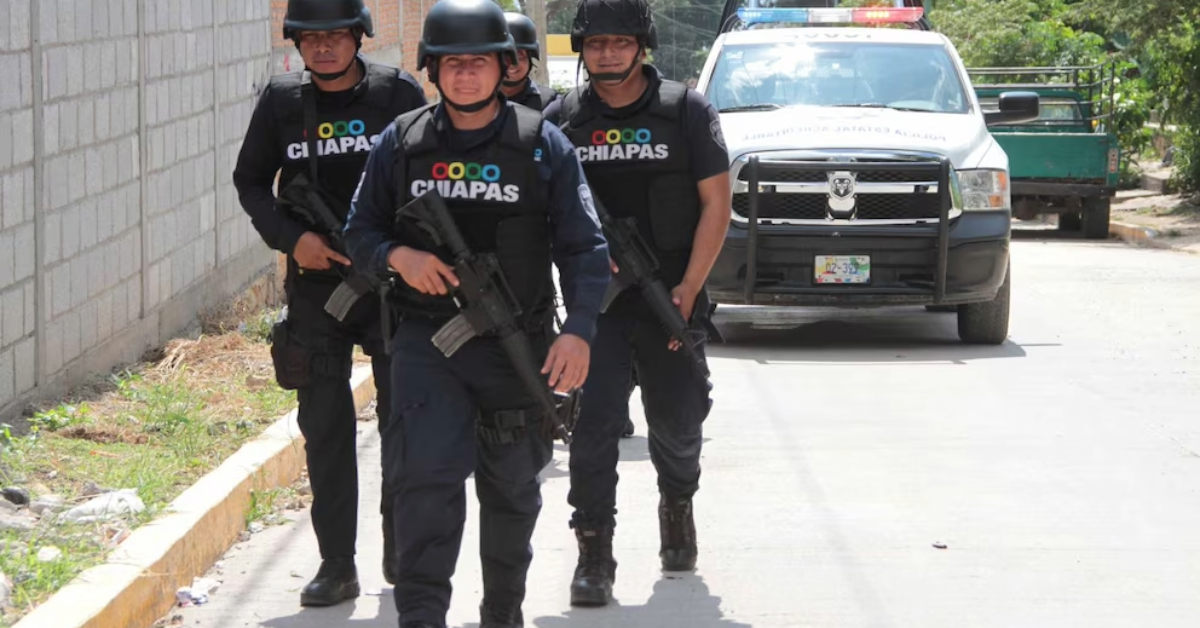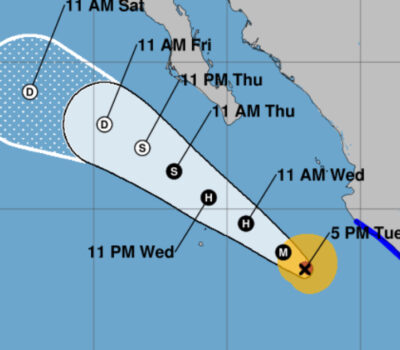Tapachula has become a battleground as the CJNG and Sinaloa Cartel fight for control, exploiting migrants and reshaping life in Chiapas’ southern border.
Tapachula, Chiapas – The southern border city of Tapachula has become a powder keg as Mexico’s two most powerful cartels—CJNG and the Sinaloa Cartel—vie for control of migrant routes and trafficking corridors, escalating violence and reshaping daily life in Chiapas.
Once a relatively quiet hub for Central American migration, Tapachula is now caught in a violent tug-of-war. The arrival of the Jalisco New Generation Cartel (CJNG) to areas traditionally controlled by the Sinaloa Cartel has triggered armed confrontations, forced displacements, and increasing insecurity.
According to reporting by InsightCrime, the shift has been most visible over the last two years, with CJNG expanding aggressively into strongholds like San Cristóbal de las Casas, Tuxtla Gutiérrez, and the border municipalities of Frontera Comalapa and Huehuetenango in Guatemala.
Topo, a seasoned journalist who has covered the region for over 20 years, describes the situation as open warfare. Sitting in a restaurant on the city’s north side, he carefully avoids naming the cartels outright, referring instead to the “four-letter cartel” (CJNG) and the “two-letter cartel” (Sinaloa) for safety. In his words, the arrival of CJNG marked a tragic turning point: “As soon as they came, everything began to fall apart.”
In May 2023, over 3,000 residents of Frontera Comalapa were forcibly displaced when armed groups, using homemade armored vehicles, invaded the town and began recruiting men under threat. Shortly afterward, rumors of CJNG’s arrival in Tapachula solidified with real-world violence—including a motorcycle attack on a police station that officials attributed to the cartel.
Leaked documents from Mexico’s Secretariat of National Defense (SEDENA), obtained by hacker group Guacamaya and published by DDoSecrets, identified Juan Manuel Valdovinos Mendoza, alias “El Señor de los Caballos,” as the key figure responsible for ushering CJNG into the region via the Gulf route. He is also reportedly linked to Los Huistas, a Guatemalan criminal organization with influence in Huehuetenango.
“The four letters want to take the place of the two letters,” Topo explains, summarizing the new reality: a strategic and violent reshuffling of cartel dominance in Chiapas.
The Evolution of Criminal Control
Back in the early 2000s, criminal control along the migrant route was dominated by gangs like MS13 and Barrio 18. These groups exploited migrants riding atop the infamous freight train La Bestia, extorting them and, in some cases, violently throwing them off the train if they didn’t pay.
But today, their power is largely symbolic. Azul, a veteran police officer in southern Mexico, explains: “Here, the 13th and 18th lines are nothing. They do small jobs for the cartels, like selling drugs or helping move migrants, but they have no control.”
Still, Azul adds, they haven’t disappeared entirely. “You can see the increase in drug dealing locations throughout the city. That’s gang activity.”
Yet this rise in visible drug sales contrasts sharply with official crime data. According to the Interactive Crime Observatory, the rate of drug-related investigations opened by the Chiapas Attorney General’s Office dropped from 2.02 per 100,000 inhabitants in December 2022 to 0.25 by April 2024. The decline, however, likely reflects reduced enforcement—not reduced activity.
First-hand observations in neighborhoods tied to MS13 and Barrio 18 show dealers operating openly, even in the presence of municipal police.
Tapachula’s Role in the Drug Trade
Tapachula may not be a top-tier city in Mexico’s drug trafficking network, but its location on the Guatemala border makes it strategically essential. The city sits along what SEDENA classifies as the “Pacific Route” for cocaine smuggling. The route begins in Ciudad Hidalgo at the border, continues through Tapachula, and stretches northward through Huixtla, Villa Comaltitlán, Acapetahua, Mapastepec, Pijijiapan, and Tonalá.
This corridor was long controlled by the Sinaloa Cartel until July 2021, when the assassination of Ramón Gilberto Rivera Beltrán, known as “El Junior,” created a power vacuum. CJNG quickly seized the opportunity to fill the void, launching a calculated campaign to take over the route.
Since then, local control has slipped further into cartel hands. Residents and human rights activists report that in several Chiapas municipalities, cartel members now dictate access to electricity, phone networks, and even food supplies. Local governance, they say, has been replaced by criminal command—where orders come from “Los Señores,” and payments flow upward to finance the ongoing war.
Migrants Caught in the Crossfire
Tapachula’s migrant population has long been vulnerable, but the stakes are now higher. Criminal groups see migrants not only as disposable labor and extortion targets but as currency in a broader scheme of territorial control and trafficking logistics.
“Cartels realized they could make money off migrants—charging them, forcing them to smuggle drugs, or simply using them as human shields,” said one human rights advocate who requested anonymity.
The combination of vulnerable populations, weak state response, and strategic geography has turned Tapachula into a battlefield.
For those living here—residents, migrants, and even long-term officials like Topo and Azul—the sense of control has vanished. The city is no longer just a border crossing. It’s a front line in Mexico’s evolving criminal landscape, where survival often depends on staying silent and unseen.
Tapachula has become a battleground as the CJNG and Sinaloa Cartel fight for control, exploiting migrants and reshaping life in Chiapas’ southern . . .












